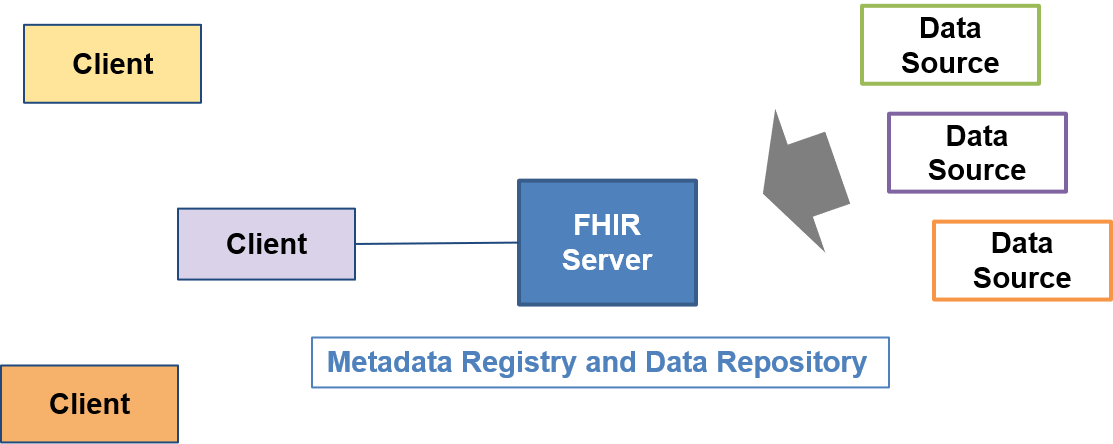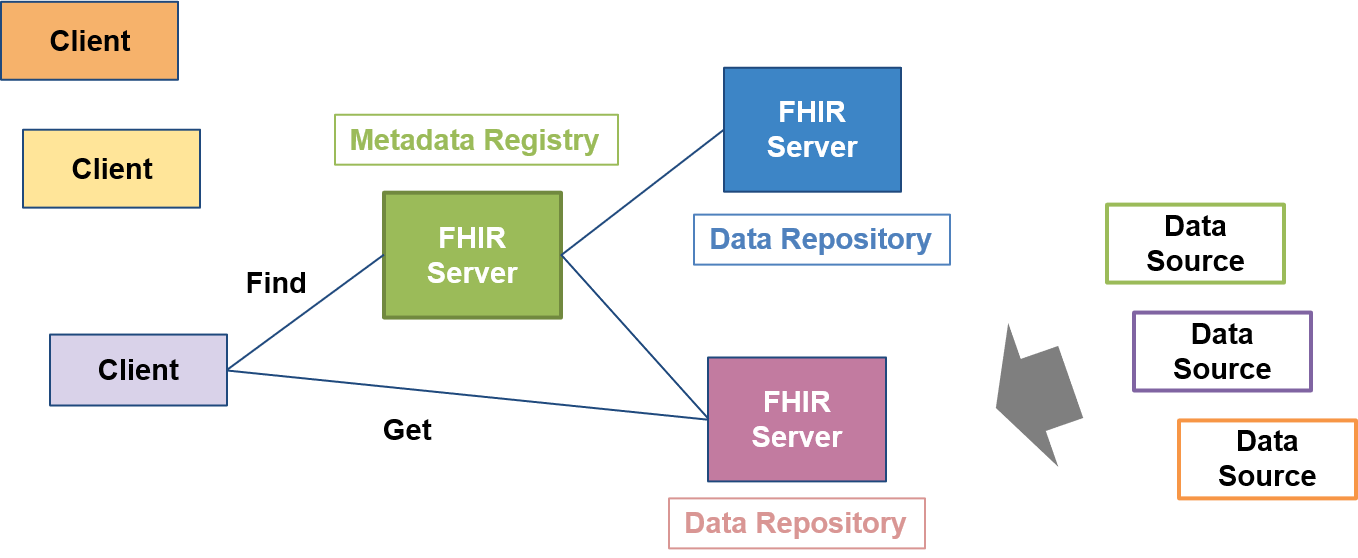This page is part of the FHIR for FAIR - FHIR Implementation Guide (v0.1.0: STU 1 (FHIR R4b) Ballot 1) based on FHIR v4.1.0. The current version which supercedes this version is 1.0.0. For a full list of available versions, see the Directory of published versions 
This page provides a short overview of a non-exhaustive list of possible logical deployment architectures that communities could consider allowing the discovery and access to FAIR data by using HL7 FHIR API; starting from a simple case where a well-known FHIR server is acting as registry and repository for data and metadata, up to the case where repository endpoints are not known a-priori and needs to be discovered.
This is not the only possible approach, for example hybrid FHIR/non-FHIR solutions could be considered as well.
It is assumed that a proper privacy and security layer is realized to assure that all the access and usage conditions specified by the data sources are properly enforced (not shown in the pictures).
All data sources store FHIR resources representing data and metadata to be shared in a well-known FHIR server. All potential clients belonging to this community know the endpoint of this well-known FHIR server.
Client uses FHIR API to search and get FHIR resources representing data and/or metadata.

Figure 1 Well-known Registry/Repository
A set of FHIR Servers are used as Data Repository by data sources. A well-known community FHIR server is used to publish appropriate FHIR resources representing metadata.
All potential clients belonging to this community know the endpoint of this well-known FHIR server.
Client uses FHIR API to search and get FHIR resources representing metadata; data references provided by the retrieved resources are then used to get data from the proper data repository (not known a -priori).

Figure 2 Well-known metadata registry
The client doesn’t know the end point of the server where metadata and data are stored; it queries then a well-known FHIR server to discover the endpoint fulfilling specific search criteria. This information is then used to search and access data and metadata as described for case 1 and 2.

Figure 3 Registries/repositories discovering.